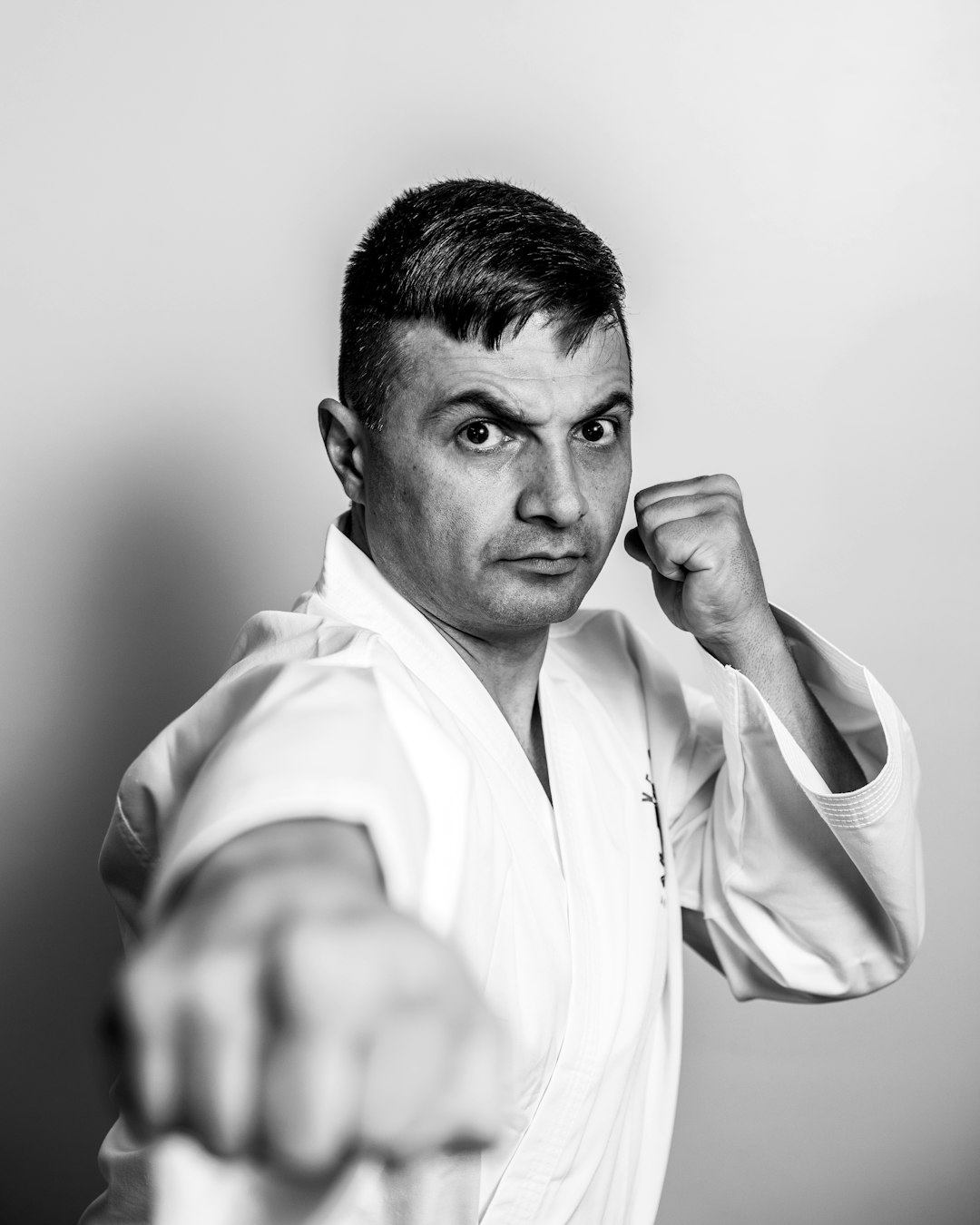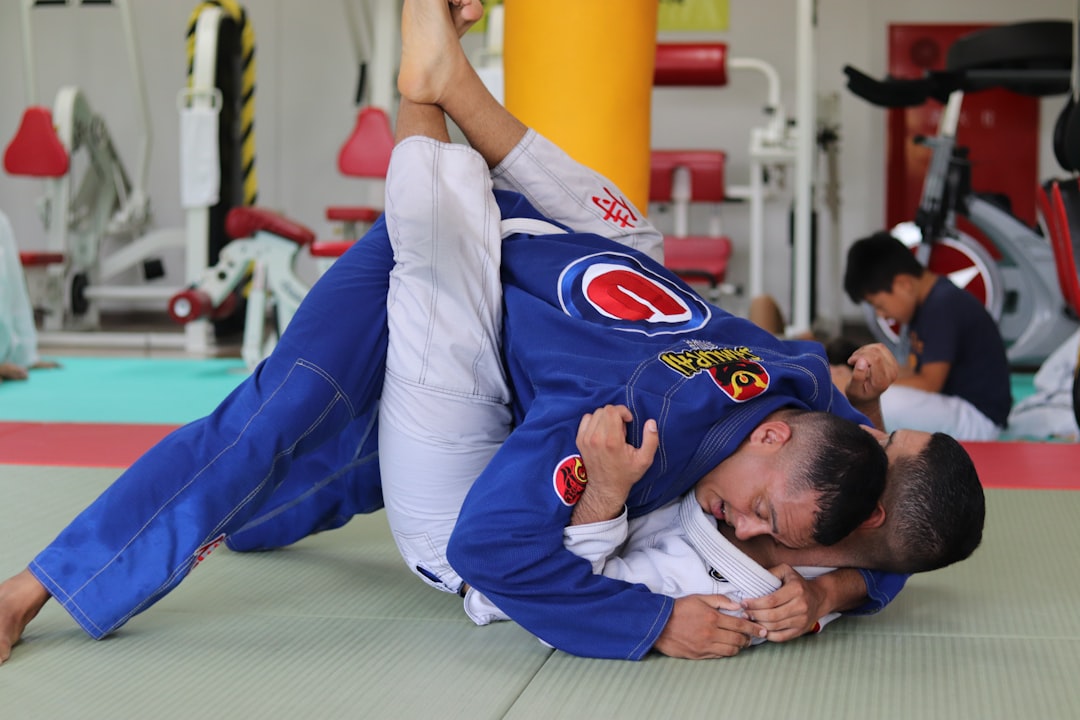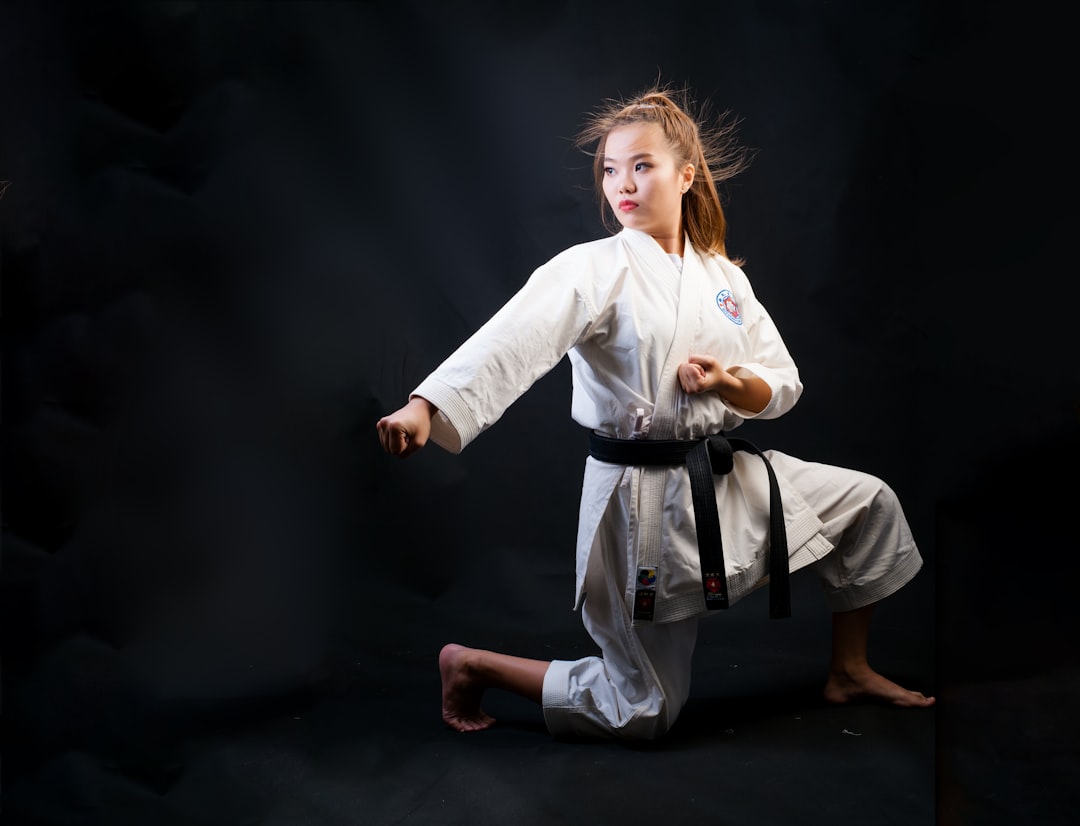Ensuring children's safety while training karate at home is paramount, and selecting appropriate protective gear that fits well is essential for both their protection and the effectiveness of their practice. Parents must carefully measure their child for headgear, chest protectors, and sparring gloves, considering the child's natural stance height to prevent injuries and allow for full movement during sparring. The correct sizing ensures gear like helmets fit snugly without impeding comfort or vision, while chest guards provide adequate protection without restrictive motion. Sparring gloves must be well-padded and sized according to hand dimensions and the intensity of contact expected. By investing in properly fitting equipment that adheres to safety standards, children can safely enhance their karate training at home, which is a critical aspect of their development in this martial art.
Embarking on a martial arts journey at home requires careful consideration of safety and comfort, particularly when selecting and measuring karate sparring equipment for children. This article provides a comprehensive guide to ensure your little warrior is well-equipped for training. We’ll cover essential measurements for kids’ gear, offer a step-by-step tutorial on fitting protective equipment, and outline a safety and comfort checklist for parents. Whether you’re new to home karate training or seeking to refine your child’s setup, these insights will help you train karate home safely and effectively.
- Essential Considerations for Measuring Children's Karate Sparring Gear for Home Training
- Step-by-Step Guide to Properly Fitting Kids' Karate Protective Equipment
- Ensuring Safety and Comfort in Kids' Karate Sparring Gear: A Parent's Checklist
Essential Considerations for Measuring Children's Karate Sparring Gear for Home Training

When training karate at home, it’s crucial to ensure that your child has the appropriate equipment for safe sparring. Properly measuring children for their sparring gear is essential to protect them from injury and to facilitate effective practice. Firstly, consider the child’s height when standing naturally; this determines the length of protective gear such as headgear and chest protectors. How tall is your child when they stand upright? Measure from the top of their head, over the back, to the soles of their feet. This measurement will guide the selection of correctly sized headgear and body protectors. Additionally, the fit of the gear should not be too tight or too loose; it must allow for a range of motion that mimics real sparring conditions. Are the arm and leg protectors long enough to cover all necessary areas without hindering movement? Ensure these also fit snugly but comfortably. The right equipment can make a significant difference in your child’s training experience at home, enhancing their ability to train karate effectively and safely.
For sparring gloves, the focus should be on hand size and the type of sparring they will engage in. What is the circumference of your child’s hands? Gloves should fit well, providing enough padding without being overly bulky. Also, consider the type of sparring they will do—whether it’s light, point sparring or full-contact—as this will influence the level of protection needed. Do the gloves have adequate padding for the intensity of their training? Ensuring that all equipment is properly measured and fitted will help your child get the most out of their home karate training sessions, promoting both safety and skill development.
Step-by-Step Guide to Properly Fitting Kids' Karate Protective Equipment

When training karate at home, it’s imperative to ensure that your child’s protective equipment fits correctly to prevent injuries and enhance their learning experience. Here’s a step-by-step guide to properly fitting kids’ karate protective equipment:
Firstly, start with the helmet or headgear. Measure your child’s head circumference by wrapping a flexible tape measure around their forehead, just above their ears. The helmet should fit snugly without restricting vision or hearing; there should be enough room for two fingers between the helmet and their head to allow for comfort and protection.
Next, move on to the protective chest guard. Place the guard flat against your child’s chest and back, ensuring that it covers the entire torso. Fasten the straps securely so that the guard stays in place without being overly tight. It should be snug but not so tight that it hinders movement or is uncomfortable. Adjusting the straps correctly will provide optimal protection during practice. The arm and leg protectors should follow a similar fitting process, with enough room for mobility while still offering full coverage and protection. Always check the manufacturer’s sizing chart for specific measurements and guidance, as these can vary between brands. With the correct fitting equipment, your child will be able to train karate at home safely and effectively.
Ensuring Safety and Comfort in Kids' Karate Sparring Gear: A Parent's Checklist

When outfitting your child for safe and effective karate sparring, it’s crucial to consider the right equipment that balances protection with comfort. Parents should look for headgear that provides ample coverage without restricting vision or movement. Does the headgear have a snug fit, protecting without being overly cumbersome? Quality headgear should fit securely yet allow your child to execute techniques comfortably. Additionally, chest protectors are essential for absorbing impact during sparring; they should be both padded and flexible to shield vital areas while not impeding the child’s range of motion. Ensure the protective gear is adjustable to accommodate your child’s growth and provide a personalized fit that adheres to safety standards. Are the gloves well-padded and have a good grip? Gloves should offer adequate padding to protect the hands and wrists, while also allowing for dexterity and control during sparring sessions. Properly selected gear not only contributes to your child’s safety but also enhances their learning experience as they train karate at home or in a dojo.
When outfitting your child for safe and effective home karate training, precise measurements are key to ensuring their gear fits correctly for optimal protection and comfort. This article has outlined essential considerations, provided a step-by-step guide for proper fitting, and given a parent’s checklist to guarantee safety and ease during children’s karate sparring. By adhering to these guidelines, you can provide your young martial artist with the right equipment to train karate at home confidently and securely. Remember, investing in well-fitted gear is a foundational step in nurturing their discipline and passion for the sport.
